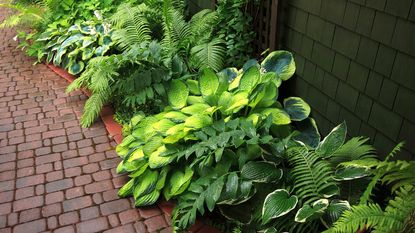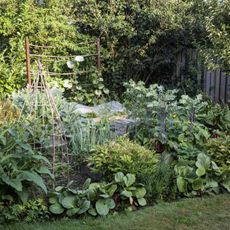Shade Is Tough


Shade gardening is difficult. This is something I have always known, but it really challenged me this past gardening season. I had some humbling failures and learned a few more things about plants and shade that I can carry over into next year.
The Burden and Blessing of Shade
One of the toughest lessons I have had to learn as a gardener — honestly, I’m still working on this one — is that some areas are just too shady to grow much. Some plants do better in shade than others, of course, but the hard truth is that these corners of the garden will never be as lush and full as the sunnier areas.
This doesn’t mean I don’t embrace the shady spots. They have provided me a challenge over the years. I have had to try new plants and learn to love the moss that grows under the walnut tree where grass won’t grow. It can be hard for a gardener to accept, but sometimes you just have to let shade areas do what’s natural.
Don’t Force Full Sun Transplants into a Shady Bed
I did a big division of day lilies this spring and hated to just throw out the plants I removed. So, I decided to create a new bed. I chose a corner toward the back of the garden near a large shrub.
I know the daylilies love the sun, but I thought, why not? This area is not the shadiest, and maybe they’ll be fine. They didn’t die but they also didn’t thrive. I should have given the transplants away to someone who could have given them a better home.
Not All ‘Will Tolerate Shade’ Plants Really Do
I worked on improving another bed this year that needed some help. It has pretty deep shade for a big chunk of the day. Previously I had pulled out some old and overgrown ornamental grass but struggled to decide what to put in its place.
Eventually, I purchased a few astilbe plants, which I had read do best with partial shade. I did my best to make the newcomers happy. I added some fertilizer and kept the soil moist, as they like it.
Gardening tips, videos, info and more delivered right to your inbox!
Sign up for the Gardening Know How newsletter today and receive a free download of our most popular eBook "How to Grow Delicious Tomatoes."
They just never really took off. They grew minimally and were spindly at best. The flower stalks weren’t very showy. I determined that astilbe needs a little more sun than I offered it. I’m still trying to figure out what to put in that bed next year, although it might end up being hostas.
Hostas Offer More Variety Than You Think
I resisted planting hostas for a long time. I always considered them kind of boring. They don’t have showy flowers, and I really only ever saw two types: medium-sized plants with either variegated or solid green leaves.
My current garden had a few of these, and while they thrived in the shadier beds, I resisted adding more hostas for a long time. Last year I finally looked into new varieties and was surprised. There are some really interesting hostas available that provide great variety in a shade bed. These are some I liked the best for adding different sizes, textures, and colors:
- ‘Gold Standard.’ I love the variegation on this hosta. It is golden green to yellow with darker green edges. It breaks up the solid green of other plants nicely.
- ‘Blue Mouse Ears.’ I tuck these adorable and diminutive hostas in between bigger ones and along the border of my shade bed. It only grows about 5 inches (13 cm.) tall.
- ‘Hadspen Blue.’ I love the color of the leaves on this variety. Something else I’ve learned about hostas is that the darker the color, the more shade they tolerate. This one, with its deep bluish gray leaves, tolerates the darkest corners of my shade bed.
I learned a few new things about shade this year, but I continue to learn more every year. Mostly, I learn to accept the shade and not try to force it to be something it’s not.

Mary Ellen Ellis has been gardening for over 20 years. With degrees in Chemistry and Biology, Mary Ellen's specialties are flowers, native plants, and herbs.
-
 Foodscaping: The Most Beautiful Way To Grow Your Own Food
Foodscaping: The Most Beautiful Way To Grow Your Own FoodFoodscaping is a beautiful and profoundly practical way to mix beauty and function in your yard. Try food landscaping for a real sense of abundance.
By Bonnie L. Grant
-
 9 Natural Landscaping Ideas For A Garden That Looks Like It’s Always Been There
9 Natural Landscaping Ideas For A Garden That Looks Like It’s Always Been ThereRead about 9 natural landscaping ideas that will inspire you! Create and enjoy a natural garden and even a natural landscape design.
By Mary Ellen Ellis